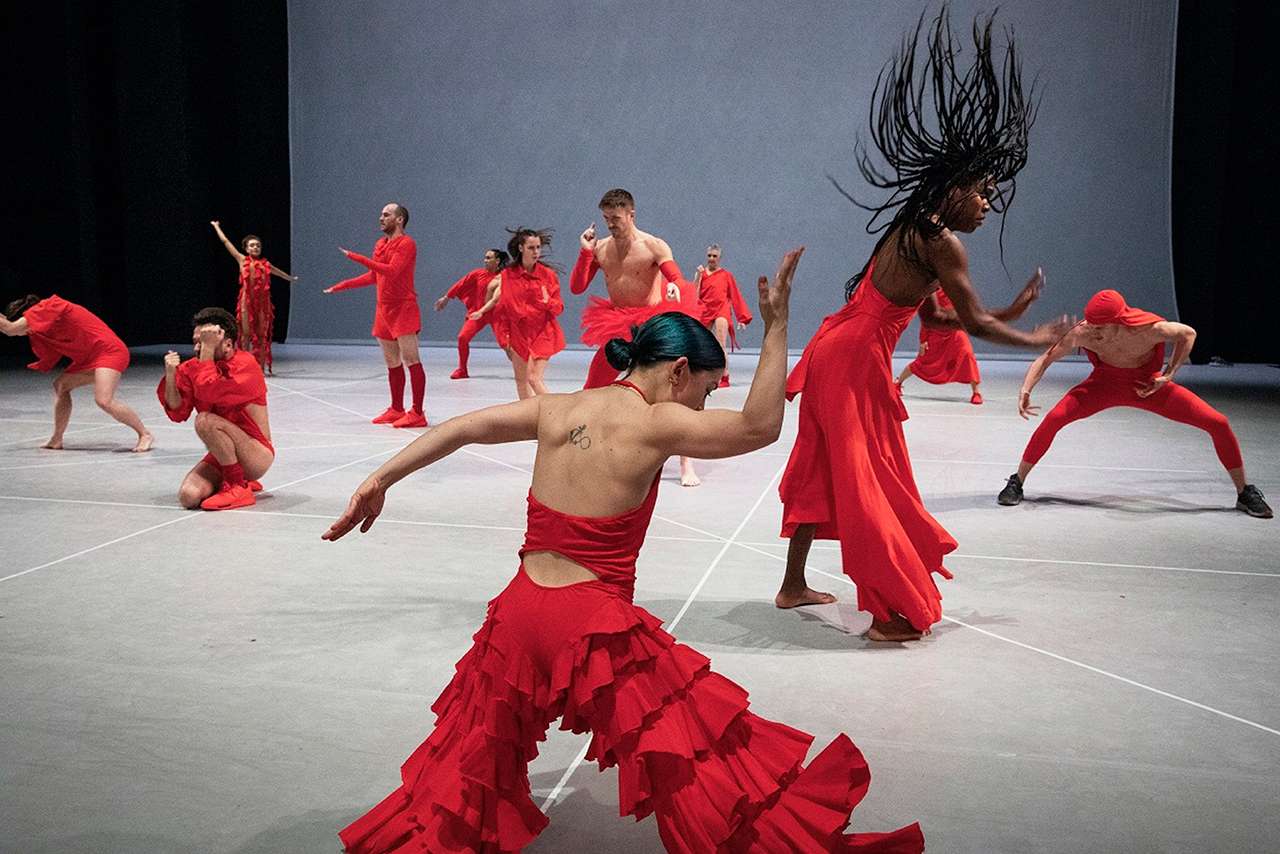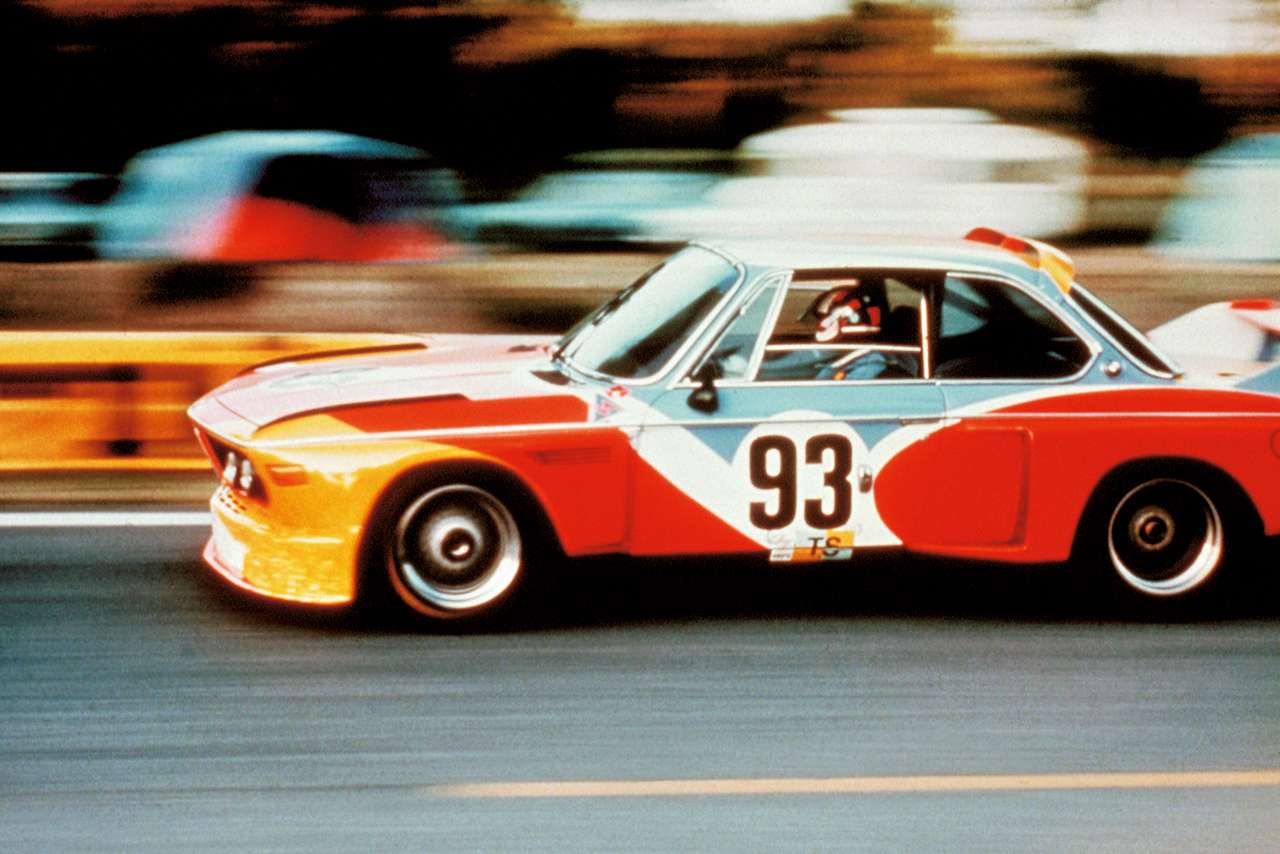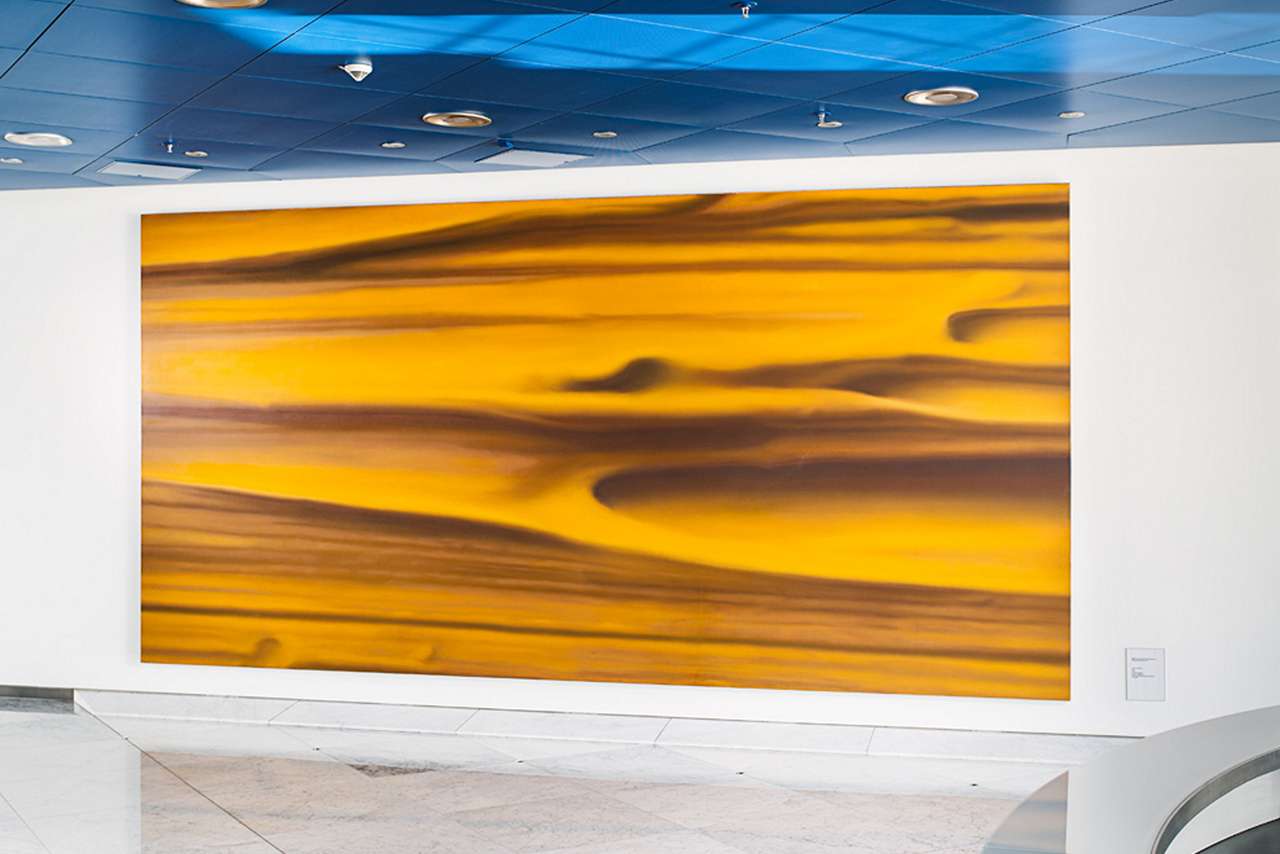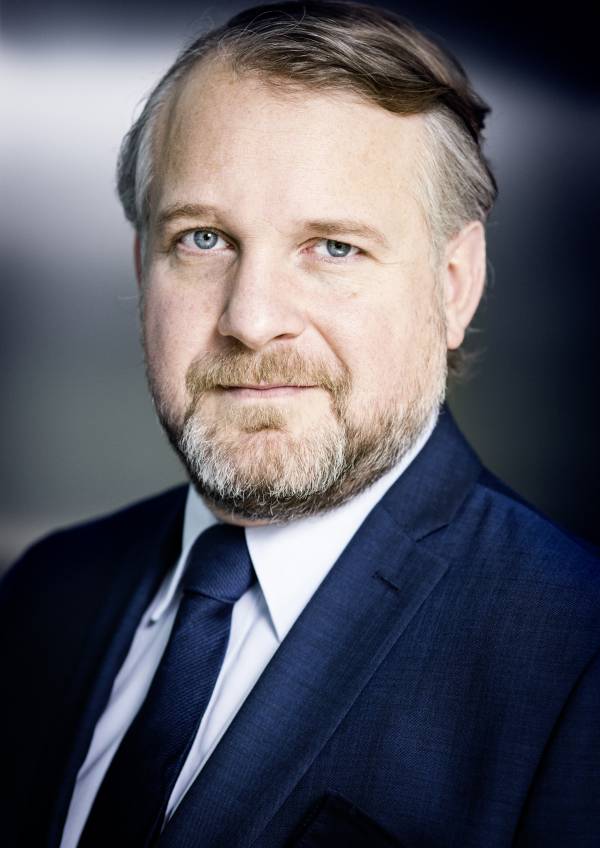WHY CULTURAL ENGAGEMENT MATTERS
By Thomas Girst

The BMW Group has been active in the arts with its brands MINI, Rolls-Royce and BMW for over 50 years now, supporting hundreds of initiatives around the world. In order for your engagement to make a difference and to come out on top of the attention competition, you need to align your company’s cultural commitment with its overall goals while simultaneously considering transformation. There needs to be a strategy in place. Ours is based on the three pillars of contemporary art, music and sound, as well as design and architecture. Overall, we are talking about the possibility of a sustainable future – for our engagements as well as for our core business. As a luxury and premium car manufacturer we could focus our efforts on only aligning our social or cultural commitment with our target audience’s taste. But then we would miss out on the opportunity to partner with great projects that, for example, allow us to collaborate with the opera to open up this cultural art form to a wider audience. We believe that the free concerts that are organized in part thanks to BMW – together with great partners such as the Scala in Milan, the London Symphony Orchestra, the Munich Opera, the Berlin Opera, even occasionally the Jazz Festival in Shanghai – allow for a sense of luxury to return to the society we successfully do business in. Ultimately, this initiative has to do with redefining luxury as something accessible. We want to provide people with the luxury of having an experience that on the one hand is brought to you by BMW, and on the other is still independent in the sense that BMW does not intervene between the art and the onlooker, the music and the listener. To be successful in this endeavour is to be a true corporate citizen, as such undertakings relate directly to the attitude and the character of a company. The greatest definition of “brand” that I have ever heard comes from the 1960s, from John Hegarty, an ad agency executive in New York City: “A brand is a piece of real estate in somebody else’s mind.” In that sense, our brand should not only be a fantastically designed car and maybe the garage around it, but the brand should also ensure that the piece of real estate has enough room for an opera house, for a gallery, for a museum and so on. I truly believe that this is what enriches what BMW stands for as a cultural brand. Of course, driving sales is also a part of this thought process alongside considering our company’s behaviour in a society. A firm cannot be considered as a corporate citizen if it only focuses on the bling-bling, and if it jumps from event to event. Taking your time, it might take years to get noticed. However, engagement is really all about nurturing and cultivating your relationships with cultural institutions and artists. And when your company believes in that, you truly can make a difference in this regard. We consider BMW to be a cultured brand. No strings attached once you understand that we are not doing this for altruistic or philanthropic reasons alone; there are always questions of visibility, image, and reputation as well. That said, we need to grant absolute creative freedom to our artists on a global scale, no matter where they are, because that creative freedom is crucial also to our engineers and designers as it is what provides the basis for them to design the greatest cars on the planet. Here, the company’s freedom takes the form of the freedom to decide who to collaborate with. What’s wrong is jumping from event to event, not having any strategy in place, not providing any planning security in terms of long-term, sustainable engagement. In other words, we can define sponsorships based not on strategic thinking but solely on the affinities of the CEO or senior management as wrong – mostly because this tends to translate into wanting to decide on artistic content, which is a fundamentally flawed approach whichever way you look at it. A lot of things can be problematic when going down this road because that means the company is only answering the call for cultural engagement reactively. A proactive approach involves having a strategy in place that is based on the shared values of any one business enterprise and engaging in partnerships that are considered to be truly meaningful. Here, it is important to differentiate between sponsorships and partnerships. To me, sponsorship focuses on moving financial resources from A to B and vice versa. These activities can be considered purely a monetary transaction, whereas partnerships are based on interaction. The main distinction between sponsoring and partnerships is the relationship you build. Partners communicate with each other, they look out for each other, they consider the benefits of a long-term commitment building on genuine curiosity about each other and a shared system of beliefs.


When it comes to the field of the visual arts and what I think of its future that companies, institutions, and individuals have a role in shaping, I want to start off with the last book I wrote titled “All the Time in the World.” It is about people taking their time sometimes through decades, sometimes through centuries, sometimes through the millennia. The French poet Charles Baudelaire wrote 150 years ago that we can communicate with each other through books, through the arts, through music, across decades, centuries, and even millennia. You pick up a book that was written 2,000 years ago and it still may resonate deeply within you today. That is the power of the arts and the power of culture. One thing that got me to write this book about things taking time is a cartoon in The New Yorker that I picked up years ago. It’s actually a little sad. There’s these two planets and they’re meeting. One of them is planet Earth. And the other is just a planet. The planet turns to planet Earth and says, “What’s wrong with you? You look sick,” and planet Earth says “I got homo sapiens.” And then the other planet says, “Don’t worry, it’ll go away.” We will go away, that is a fact. We we’ve been here on this planet as we are today, all coming from Africa, for 40 or some 50,000 years, maybe a hundred thousand years. We implode into the sun coming closer in about 5 billion years, but how long are we going to last as a species? The world will last, will we? So while we are on this planet, I think there’s a responsibility to protect what is beautiful. When we think about ugliness, you think of ugliness always expanding. And when I say ugliness, I mean war, pollution, patriarchy, nationalism, autocracy. I mean dictators and xenophobia, censorship, not being able to speak your mind, all these things that we are confronted with every single day. I’m not saying that art is a moral compass, but art is something that no other being on this planet can actually accomplish and thrive in, but we can as we can relate to others. We can express that through a brush or through words and make that last and make other people understand without actually having to have that experience ourselves by looking at somebody’s work, by experiencing through the arts and through literature. This is where the strength of the arts comes from. When ugliness spreads, we need to protect beauty. It’s about creating meaning, about creating something meaningful, not merely adding to the bling-bling of the 60+ billion dollar art market. It’s one thing to post images on your social media channels. Where you have been, what makes you happy, what you eat. Yet there is something the avantgarde artist Marcel Duchamp once referred to as the “solitary explosion of man facing himself alone.” We all know that solitary explosion of man or woman facing him or herself alone. We know how exactly what that feels like. That’s how the artist in the studio feels. They shouldn’t give up what they have just because they are seeking fame, want to sell fast or be represented by a certain gallery. After all, what is culture? It’s a refuge. A sanctuary of beauty and depth, of meaning and peace. A safe haven, far from the hustle and bustle of everyday life. Having said that, we enjoy indulging in distraction far too much. This turbo-capitalist “survival of the busiest” leaves us frozen in a frenzied standstill. Even though the current signs of the times call for us to pause, we prefer to continue to whirl around in blind activity. We should not want to adhere solely to the performance-driven creed of better, richer, more beautiful and powerful. It is art that renders the invisible visible, as Fabio Mauri said – thoughts and feelings, impressions and experiences. None of us need ever be lonely, for we all stand on the shoulders of giants. We can send signals to each other like lighthouses along the coast at night. Across cultures and ages. This is how Charles Baudelaire once described it. We can communicate with each other through the accomplishments of art, music, and literature over decades, centuries, and even millennia. Culture is both an offering and a demand. Not necessarily for more morality, but for more empathy. A cantata by Bach might allow us to comprehend God, just as Dostoevsky’s Raskolnikov allows us to understand a murderer. And when the performance artist Marina Abramovic´ and her partner Ulay walked toward each other along the Great Wall of China for four thousand kilometers over ninety days, only to separate forever in the moment they passed each other, then we know just how infinitely wonderful and devastating love can be. That said, I am very much aware that on average, one in a hundred art students will be able to live off their art. So I always tell my students to get another job, which is fine. Not necessarily to fake it until you make it, but to get another job and do the arts on the side. I firmly believe in the “As well as” and not in the “Either or” approach to life. The German philosopher Friedrich Nietzsche once wrote that in order to be a lightning, you have to be a cloud for a long time. That’s just beautiful because with everybody wanting to make an immediate impact, with everybody striving to be a lightning, we should know that for us to be a lightning, we have to be a cloud first. So let’s take the pressure off somewhat and focus a little more on what it is that we want and what it is that we want to contribute. Marshall McLuhan coined the phrase “Spaceship Earth.” At the time NASA announced their outer space program in the 60’s he argued that we already are in outer space and need not explore anything outside planet Earth. He said that “on spaceship earth, there’s no passengers. There’s only crew.” If we think of ourselves as crew members and not passengers, do we want to contribute to the ugliness as outlined before, whichever way we define it, or do we want to contribute to beauty and with beauty, again, I don’t mean any moral compass. I don’t mean something that is just there for mere visual aesthetics or for pleasing the eye. It can be controversial and contentious. Art should lead us outside or comfort zone, it should question and broaden the parameters of our thinking. This is what makes us so beautiful as human beings on this planet. I cannot be anything but optimistic. “Every future needs a past” is what the German philosopher Odo Marquardt once said and it’s interesting how the focus of the arts is now on employing the latest advances in technology. Something the arts has always done. There is a lot going on in the digital realm and art is no longer about wielding brushes. New things get picked up and old things get lost. Nobody can paint today as great as, say, the Renaissance painters painted 400 years ago, but there’s no longer the necessity of doing that. A lot of young artists delving into new technology. Good artists make us of technology and not the other way around. On the side of BMW, for example, I was actually very happy to be working with the great artist Cao Fei who created a BMW art car, adding to this amazing series of artists from Andy Warhol to John Baldessari, from Jenny Holzer to Esther Mahlangu, the African Ndbele painter, turning cars into art cars since 1975. She created an art car not by turning an object of industrial design into an art object merely by painting the surface of a car. She created an app, she created augmented and virtual reality. She created a video and music, all being an integral part of what she considered her art car project. As a next step, we made all previous art cars available in the digital realm by downloading an app that allows everyone to position those rolling sculpture anywhere, from the beach to the bathroom. We love to pay tribute to what is possible and only recently fed an algorithm 5,000 works of art of the past to create an AI ultimate masterpiece projected onto a car. This is just toying with what can be achieved. We need to always keep in mind what Hito Steyerl said that when we talk about artificial intelligence we also need to take into account artificial stupidity. Another thing which I think that was a paradigm shift, at least for me, is that we brought art into the car, something that has never happened before. Cao Fei, the same artist who had created a BMW art car, programmed something she called “Quantum Garden” to be played as an art mode on the interior display by the click of a button. Rather beautiful and intricate – all these color lines looking like far away galaxies, almost breathing with each other and delving into each other and creating new circles and cycles of life and free flowing energy. When it comes to what is really happening right now with the arts and the paradigm shift that we are seeing, Non Fungible Tokens comes to mind. I would rather call them Neoliberal Futile Trash. NFTs are in the red-hot center of a late turbo-capitalist art market. The great gold rush. I could not be less interested. What matters is meaning and not so much surfing the next wave. I would advise younger artists to not only seek fame or fortune. And that is as much true for the artists themselves as it is for those that are looking at art, those that are buying and those who are collecting art. What resonates deep within you? Let’s not limit the art and the artist by demanding exactly that same artwork that your best friend may proudly display on their wall at home. Maybe you are able to get to know the artist, maybe at a fair, maybe at an academy. Every museum director that I speak to around the world makes it very clear that when it comes to an audience the future of an institution relies on that audience to be less affluent, less educated and more diverse. I am a white middle-aged European male. The Eurocentric view of things that I grew up with is slowly giving way to a much more complex, much more heterogeneous perspective that takes into account other narratives. I also happen to believe that the future is female. This is also what I mean when I maintain how important it is to delve into other people’s minds and to constantly broaden one’s horizon. Marcel Duchamp said that “the great artist of tomorrow will go underground.” Contemporary and future art is something we may not even see or comprehend as such because a lot of it is happening far from the trodden path. If you are interested in the arts and you are interested in your pursuit of what is of importance to you, you might come across things that nobody else might have heard of. This is what I mean when we strive to take on the new, this is what I mean when I say, let’s open this one up as much as we can. I do not wish to believe what Udo Kittelmann, the former director of the Nationalgalerie Berlin, once said that “art will reach its limits because it keeps losing its magic.” I rather end on a positive note. Regardless of whether we talk about the year 2,022 or the year 2,220, the only journey that is worth undertaking is the one that is taking us deep down within ourselves. And that is sometimes the most scary place to go to, but it’s also the most adventurous. So be adventurous and don’t think so much about parameters of how you define success. I do think that the visual arts have a great future ahead of them. Let’s not only protect but let’s also celebrate what makes us beautiful as human beings!

BMW Group, Global Head of Cultural Engagement. Professor Thomas Girst, PhD, studied Art History, American Studies and German Literature at Hamburg University and New York University. Between 1995 and 2003 he was head of the Art Science Research Laboratory in New York under the directorship of Stephen Jay Gould (Harvard University). Since 2003, he has been the Global Head of Cultural Engagement at the BMW Group while also lecturing at various international universities. In 2016, Girst received the “European Cultural Manager of the Year” award. His books have been translated into numerous languages and most recently include Art, Literature, and the Japanese American Internment, The Duchamp Dictionary, BMW Art Cars, 100 Secrets of the Art World, and Alle Zeit der Welt (Tutto il tempo del mondo, add editore). His upcoming book, Cultural Management: A Global Guide, will be published by Thames & Hudson in 2023.
